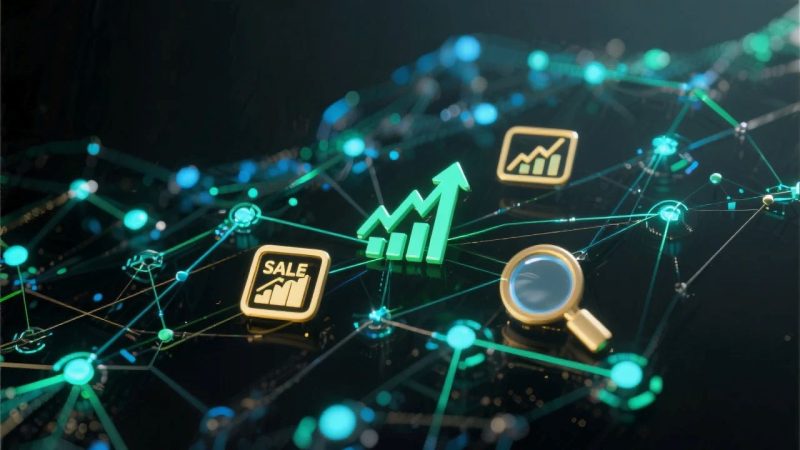
In the fast-paced world of ecommerce, time is currency. Brands that streamline operations through automation not only reduce repetitive work but also unlock opportunities to grow faster and sell smarter. Marketing automation offers scalable solutions that boost engagement, improve customer retention, and increase revenue, without added manual effort.
This blog outlines seven practical marketing automation strategies tailored for ecommerce businesses ready to scale efficiently.
What Is Ecommerce Marketing Automation?
Ecommerce marketing automation refers to using software tools to automate repetitive marketing tasks. These include sending personalized emails, tracking customer behavior, segmenting audiences, and launching timely campaigns.
The purpose is clear: deliver the right message to the right customer at the right time automatically. This approach helps reduce manual errors, improves consistency, and strengthens customer relationships through data-driven interactions.
Why Automation Matters for Ecommerce Brands?
Marketing automation is more than just a convenience. It’s a strategic asset. Key benefits include:
- Time Efficiency: Reduce time spent on manual tasks like sending emails or updating customer lists.
- Revenue Growth: Triggered campaigns based on customer behavior drive higher conversion rates.
- Enhanced Personalization: Leverage data to deliver more relevant and timely content.
- Improved Customer Retention: Stay connected with your audience through lifecycle-based engagement.
- Scalability: Manage larger customer bases without expanding your marketing team.
7 Proven Ecommerce Marketing Automation Strategies
1. Welcome Email Series
First impressions matter. Automate a welcome email flow that introduces your brand, shares your values, and offers an incentive for first-time shoppers. A 2–3 email sequence can increase engagement and conversions from new subscribers.
2. Abandoned Cart Recovery
Nearly 70% of online shopping carts are abandoned. Set up automated emails to remind customers of their incomplete purchases. Include clear visuals of the product, customer reviews, and time-sensitive offers to encourage checkout.
3. Post-Purchase Upselling
After a customer makes a purchase, recommend related or complementary products. Automating upsell emails or thank-you page suggestions helps increase the average order value and boosts repeat purchases.
4. Customer Re-engagement
Target inactive customers with win-back campaigns. Use automation to detect inactivity and send messages offering discounts, showcasing new arrivals, or simply reminding them what they’re missing.
5. Behavioral Triggers
Use customer actions like browsing specific product categories or adding items to wishlists as triggers for personalized campaigns. These real-time automations increase engagement and drive higher intent purchases.
6. Birthday or Milestone Campaigns
Celebrate customer birthdays or anniversaries with personalized messages and exclusive offers. These gestures foster loyalty and humanize your brand.
7. Review and Feedback Requests
After purchase, send automated requests for product reviews. This not only boosts social proof but also provides insights into customer satisfaction and areas of improvement.
Emerging Trends in Ecommerce Automation
As automation tools evolve, ecommerce brands should stay informed about key trends shaping the industry:
- AI-Powered Personalization: Advanced algorithms analyze behavior to predict intent and tailor experiences.
- Omnichannel Automation: Integration of email, SMS, and social platforms ensures consistent customer journeys.
- Privacy-First Automation: With growing data regulations, tools must prioritize compliance and transparency.
How to Choose the Right Automation Tool
Not all automation tools are built the same. When selecting a platform, consider:
- Ease of Use: A user-friendly interface for setup and customization.
- Integration Capabilities: Compatibility with your ecommerce platform and CRM.
- Segmentation and Analytics: Tools that support deep audience segmentation and clear performance tracking.
- Scalability: Features that grow with your business needs.
Top Tools to Explore:
- Klaviyo is known for ecommerce-focused features
- HubSpot is comprehensive CRM and marketing suite
- Omnisend is built for multichannel marketing
- ActiveCampaign is strong in email automation and customer journeys
Automation is not a shortcut, it’s a strategy. Ecommerce businesses that embrace automation gain more than just time savings. They build stronger customer relationships, deliver consistent experiences, and scale operations with confidence.
Start with one or two strategies that align with your current goals. Test, refine, and expand. The right automation setup transforms marketing from a reactive process into a proactive growth engine.
For guidance on setting up your ecommerce automation stack, visit Datum Labs to explore tailored data solutions for growing online brands.
